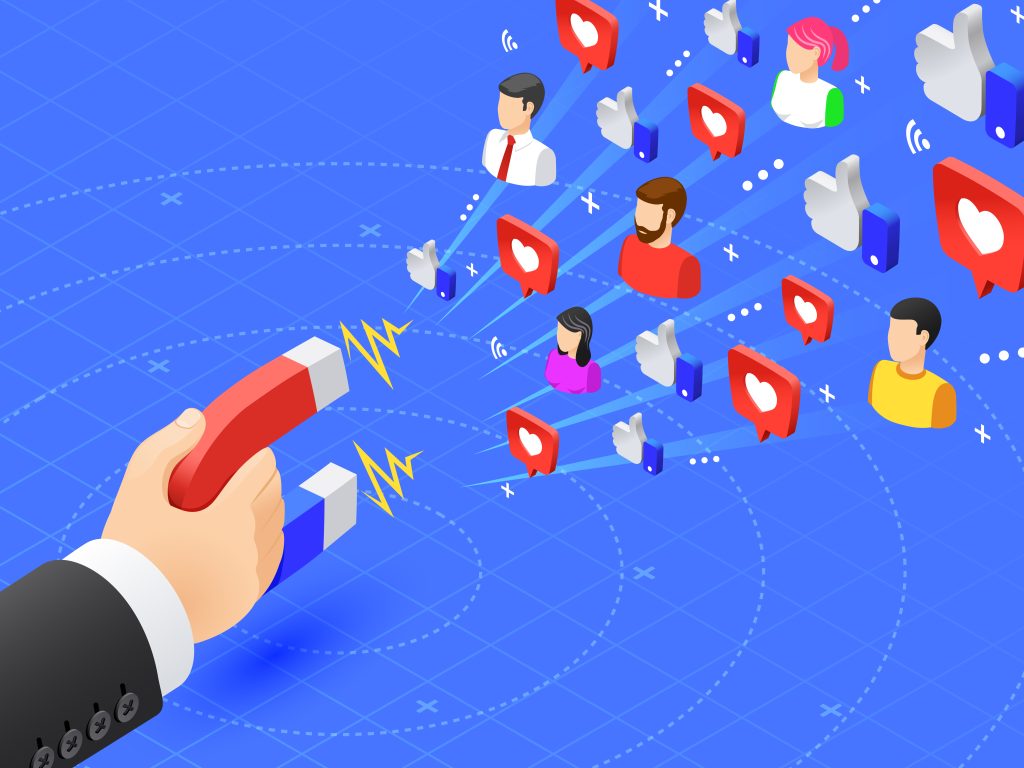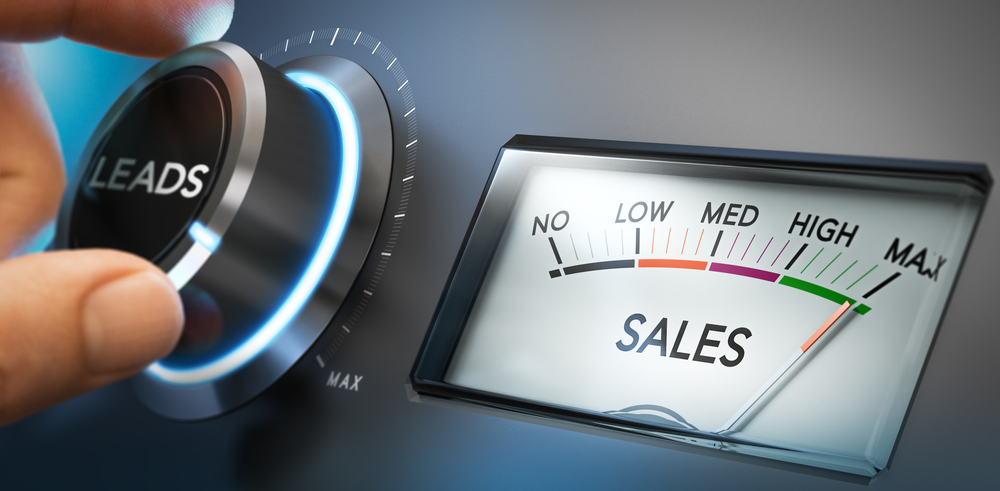Lead generation is a vital aspect of any online business because it helps capture essential contact information to nurture leads and turn them into paying customers. Since it involves various marketing tactics, this process is categorized into two main types– inbound and outbound lead generation. So, what is inbound lead generation and how do you successfully implement this method within your business operations?
Although both methods are effective in nurturing leads, inbound lead generation should be the center of your marketing strategy. That’s why we chose this strategy type to be the focus here. After you’ve become well-acquainted with what is and how to generate inbound leads using this method, we’ll also address some of the common challenges and considerations during the process.

What is Inbound Lead Generation?
Inbound lead generation is the process of attracting and capturing customers to the services or products your brand offers. Unlike the outbound method, which involves directly contacting potential leads with no prior interest in your brand, this practice focuses on putting out targeted content to capture the ideal customer profile of your brand. In inbound lead generation, the prospects usually show some previous interest in the products your brand offers.
By optimizing the platforms where potential leads are most likely to find and interact with your company for lead generation, you let the ideal customer come to you. Instead of spending time and resources reaching out to an audience that hasn’t shown any interest in your business, inbound lead generation is known for attracting customers who are more likely to buy your products or services.
Since you won’t be spending any money on accessing potential customers through paid advertising, you’ll be nurturing organic leads that have more chances of converting into paying customers. But what does organic leads mean? It means that these potential customers have come across your brand naturally through organic sources, such as search engines, social media, or referrals.
Key Components of Inbound Lead Generation
Even though the pillar of any inbound lead generation strategy is content, we cannot let the other components fall out of the picture, such as:
- Content marketing – creating and strategically distributing high-quality and valuable content tailored to your target audience’s needs and interests. There are numerous content forms you can experiment with, including images, videos, and written content. Some common examples are social media and blog posts, newsletters, whitepapers, and infographics.
- SEO (Search Engine Optimization) – content must be optimized for search engines so it reaches the users who are actively seeking your products or services. It’s important to conduct thorough keyword research and use the words and phrases users most likely search for.
- Social media – online social media channels allow you to reach a targeted audience through various platform-based features.
- Lead magnets – by promoting exclusive content, discounts, and offers, users are more likely to provide their contact information because they’ll get something in return.
- CTAs – short and action-oriented calls-to-action placed strategically to guide the users to take a desired action.
- Landing pages – separate website pages designed specifically to capture the audience’s information.
Benefits of Inbound Lead Generation
To better understand how this process impacts your business performance, here are the main advantages you should familiarize yourself with:
- Higher lead quality – since inbound lead generation focuses on organic leads who have found your brand naturally, they portray higher lead quality because they’re more interested in trying your products or services.
- Cost-effectiveness – since organic lead generation focuses on content creation and distribution, you’ll immensely lower your costs by avoiding the expenses related to paid advertising and accessing prospect lists.
- Increased customer engagement – frequently and continuously publishing content leads to higher engagement rates. Not only will users interact with your content, but they’ll also be encouraged to contact your brand directly through the specified platforms.
- Increased brand awareness and credibility – producing and publishing high-quality and informative content that addresses your audience’s pain points will help you reach more users and establish your presence as an industry expert. By offering solutions to common problems, you’ll start gaining your community’s trust, increasing your chances for the ideal customer to try your products or services.

How to Implement Inbound Lead Generation
Even though it’s a long-term and complex process, you can follow these steps to ensure your inbound lead-generation efforts are successful:
- Define your goals and objectives
- Define your target audience
- Develop a content strategy
- Create and optimize content
- Content distribution
- Lead nurturing
- Tracking performance
Define your goals and objectives
The first step in implementing an inbound lead generation strategy is defining your goals and objectives. While many often overlook the importance of this primary step, it helps define the key metrics you need to track to measure your strategy’s success. To make the most of your efforts, you should try setting SMART goals that focus on the following elements:
- Specific
- Measurable
- Achievable
- Relevant
- Time-bound
Define your target audience
After you’ve set your goals, the next step is to define your target audience. Conduct thorough audience research through surveys and interviews, or turn to analytics from previous lead generation campaigns to determine which leads will most likely convert and uncover their behaviors and interests.
Once you’ve gathered the needed data, you should start creating customer personas that represent detailed profiles of your ideal customer. Within these profiles, you should include detailed information about their demographics, needs, interests, preferences, behaviours, and pain points.
Develop a content strategy
Since the previous step was used to define your target audience, you can now begin developing a content strategy based on the users’ needs, pain points, and expectations. During this phase, you should first define the platforms where you intend to post your content. This can either be your blog, social media profiles, or emails. Remember that each channel has its own perks and benefits while targeting a specific kind of audience.
Next, decide what type of content will fit your audience best and when to post it. Depending on the platform you choose, this can include written content, photos, or videos that add value to the customer, address their common challenges, and inform them about the latest industry trends. If you’re unsure of what works best, you can try experimenting with different types of content, such as articles, infographics, or webinars, to see which option performs best.
Create and optimize content
After you’ve crafted a thorough content strategy, the next step is to start creating and optimizing content. Once again, you must ensure you create high-quality content that’s valuable, relevant, and tailored to your audience’s needs. Depending on the content type, you should always optimize it based on the latest SEO trends. This will help your content get more exposure and can result in higher engagement rates.
Moreover, you should always strategically place CTAs where possible. These clear and action-oriented elements will provide clear instructions for what the users should do next and encourage them to take the desired action.
Content distribution
Once you’ve created and optimized your content, you should start distributing it through the desired channels. As mentioned, the three main platforms where you can do so are your website’s blog, social media channels, and email campaigns. If you’ve already planned out your posting schedule, remember that most of these channels have a scheduling feature. This allows you to schedule multiple posts at once, so you won’t have to post them manually.
Lead nurturing
If you’ve successfully optimized your inbound lead generation strategy, you’ll notice a steady flow of leads coming your way. However, your work doesn’t end there. The next step is to develop a comprehensive lead nurturing strategy to encourage the leads to convert into paying customers. Building and maintaining a strong relationship with your users will immensely improve your conversion rates since they’ll be more likely to try your products or services.
Tracking performance
Even after you’ve successfully managed to generate a steady stream of leads, you should never forget to track your performance and continuously optimize your strategy. This can be done by defining KPIs (key point indicators) and lead sources beforehand and analyzing your performance based on these metrics. Since your primary goal is inbound lead generation, some of the primary metrics you should focus on are website traffic, content engagement, and conversion rates. Once you’ve gathered insights into your performance and areas of improvement, you can start making adjustments in your strategy where needed.

Challenges and Considerations
As with any online strategy or business operation, inbound lead generation comes with a set of challenges and considerations you should be aware of. To make the most out of your next lead generation strategy, you should always be mindful of the following practices:
- Keeping up with posting schedules – one of the main issues many companies struggle with is maintaining a consistent posting schedule. Remember that you should always produce high-value content tailored to the users’ preferences. It’s important to plan out a content strategy beforehand to ensure quality content and regular distribution.
- Targeting the right audience – even if you’re just starting out, you should always know who your ideal customer is. Failing to tailor your lead generation strategies based on your target audience can lead to low-quality leads, making it harder to convert them. Always take the time to create customer personas based on the wants, needs, behaviors, preferences, and key pain points.
- Algorithm changes – since inbound lead generation involves SEO, you should always be wary of the frequent search engine algorithm changes. Keeping up with the latest trends will help you develop an effective SEO strategy and keep your content optimized.
Conclusion
So, what is inbound lead generation? It’s a proven method of capturing and bringing high-quality leads that have shown previous interest in your brand through valuable content. By frequently and continuously distributing content on various platforms, such as blogs and social media, you can encourage the ideal customer to get in touch with your brand and try out your products or services.
If want to start your lead generation journey, let CLICKVISION LeadGen drive you to success. By giving you access to a highly targeted audience that’s actively searching for your products and services, you can immensely increase your conversion rates and revenue generation. So, contact us today and discover how we can connect you with hot and high-quality leads to help you drive online success!

Dimitar is a seasoned marketing specialist and the visionary behind CLICKVISION. With over 10 years in digital marketing, he excels in crafting marketing strategies that boost rankings, which in return increase leads, conversions, sales, profits, and ROI.
